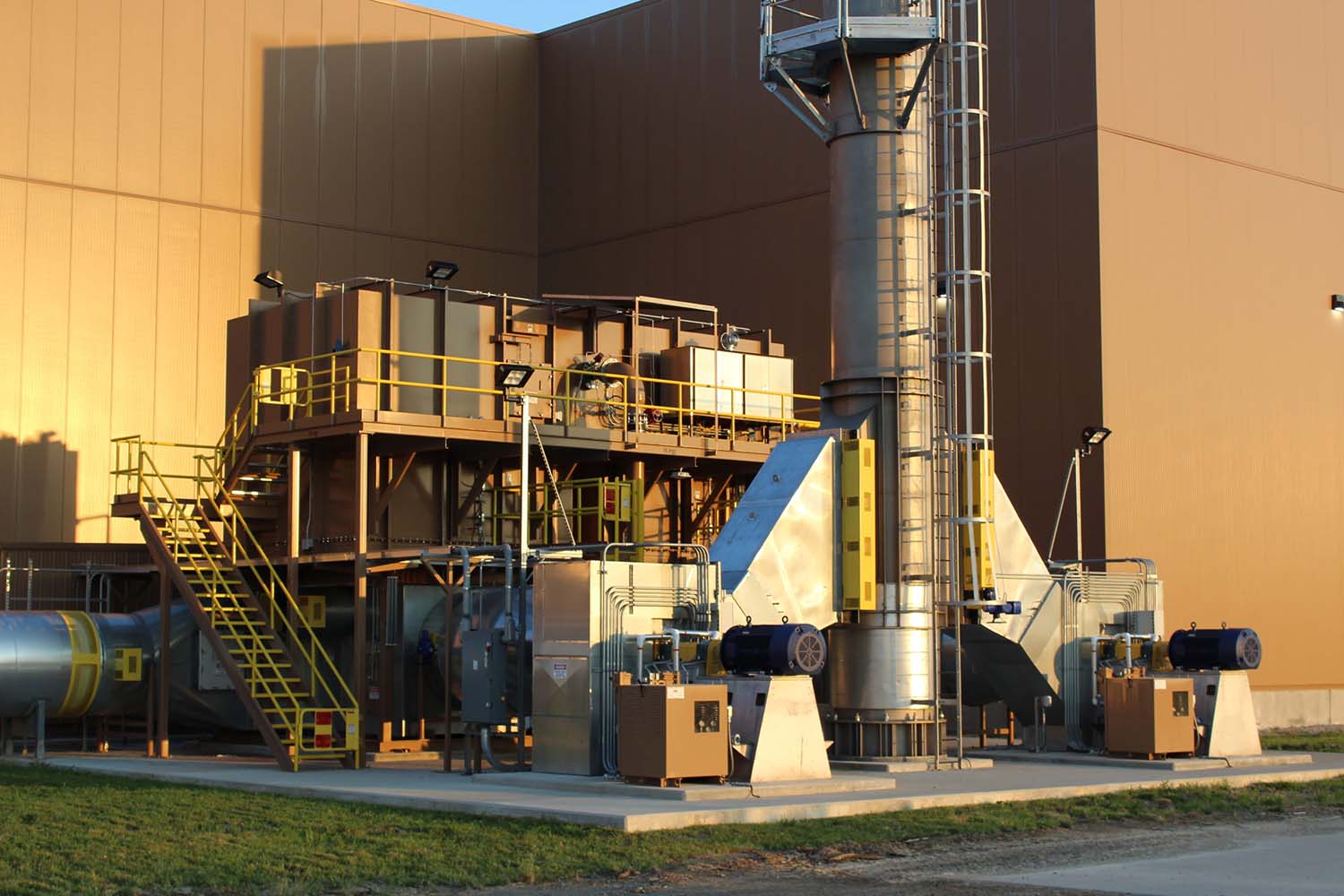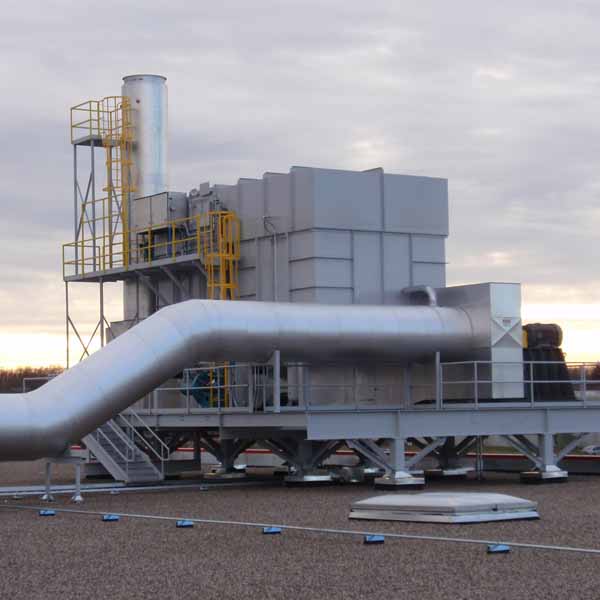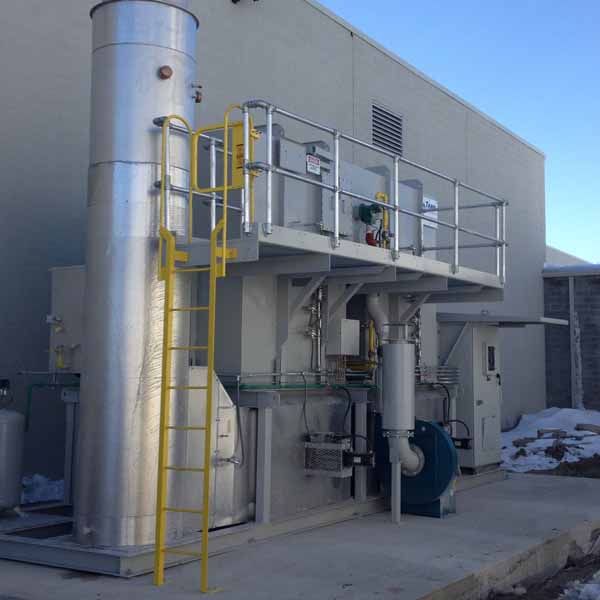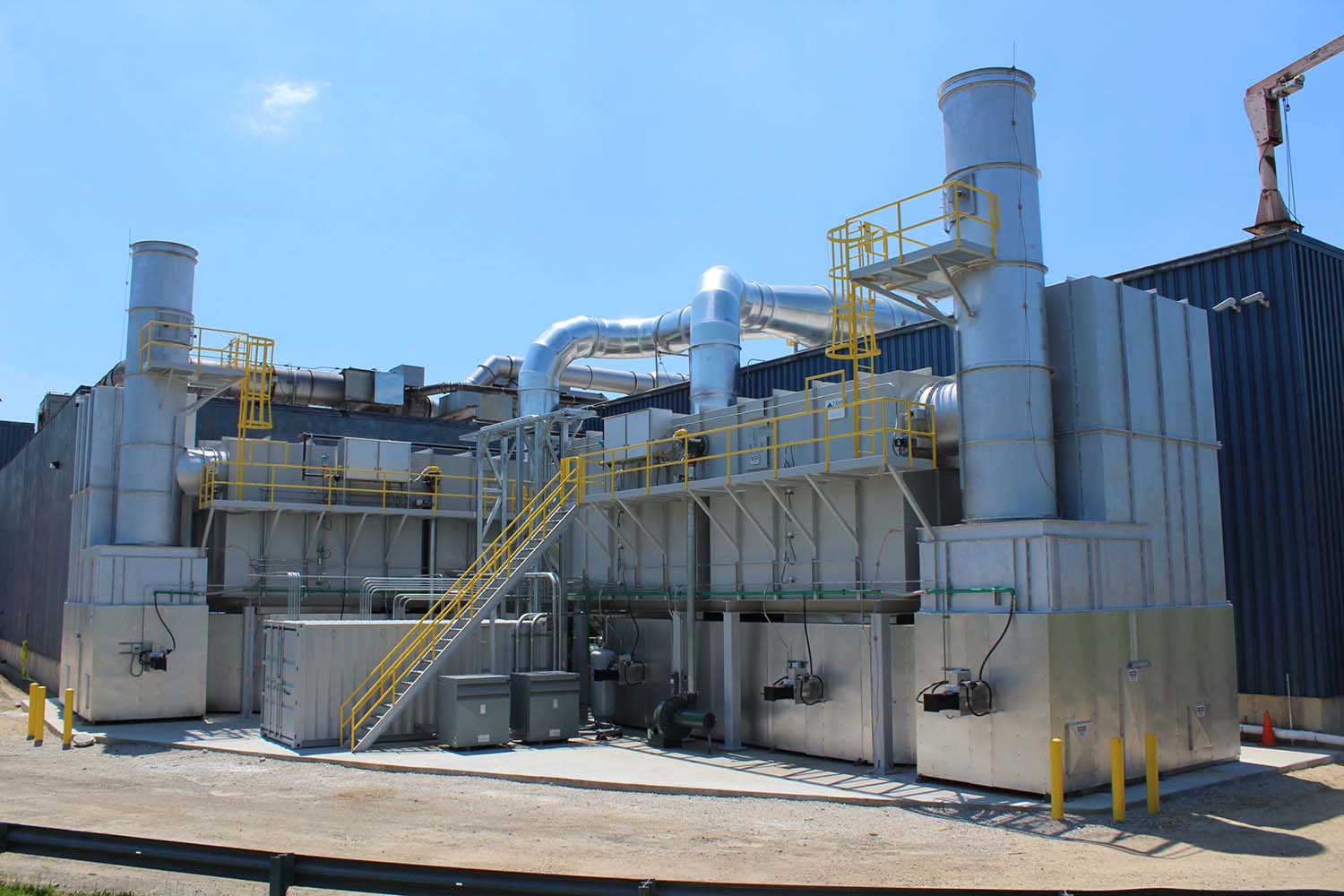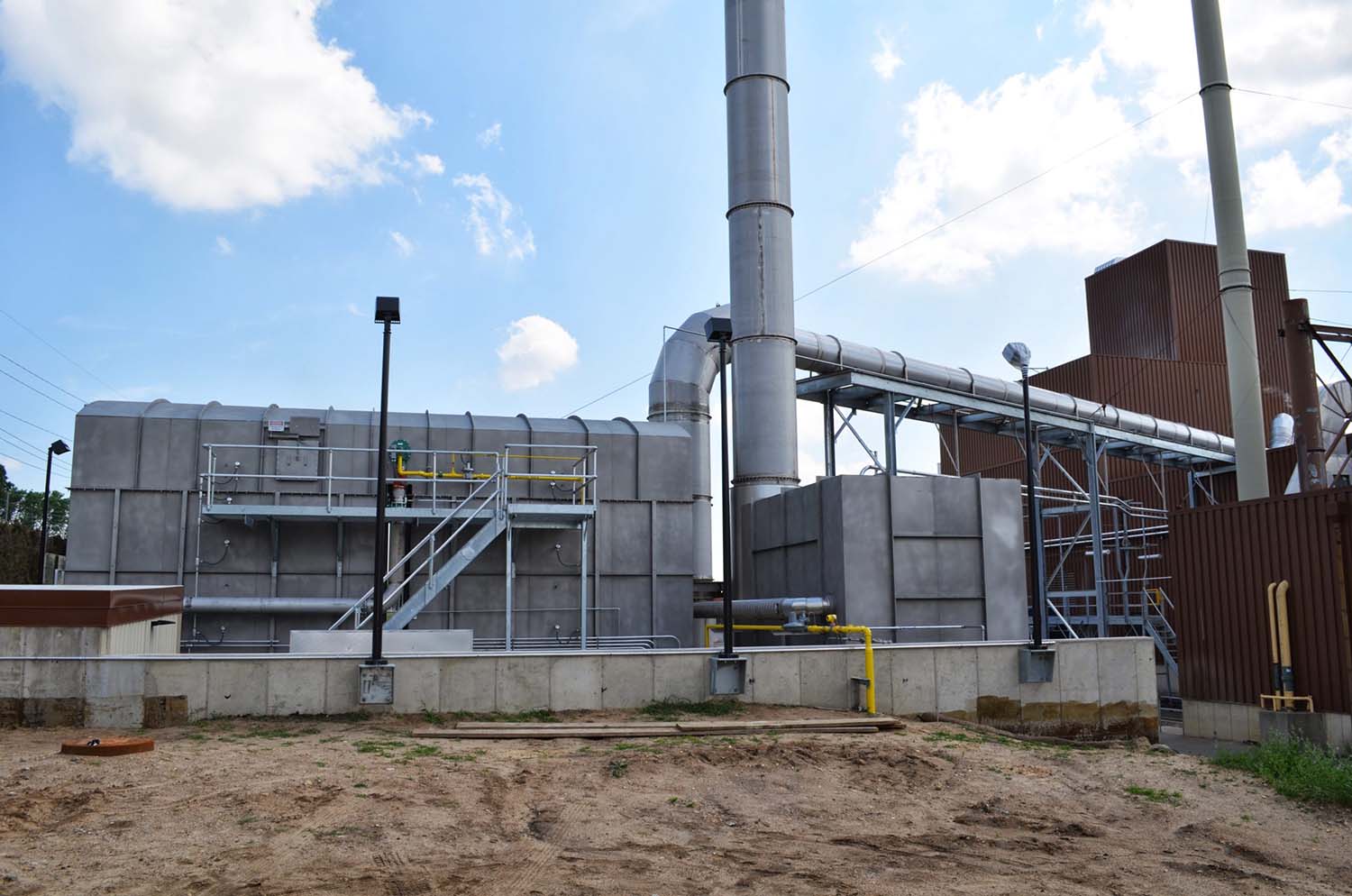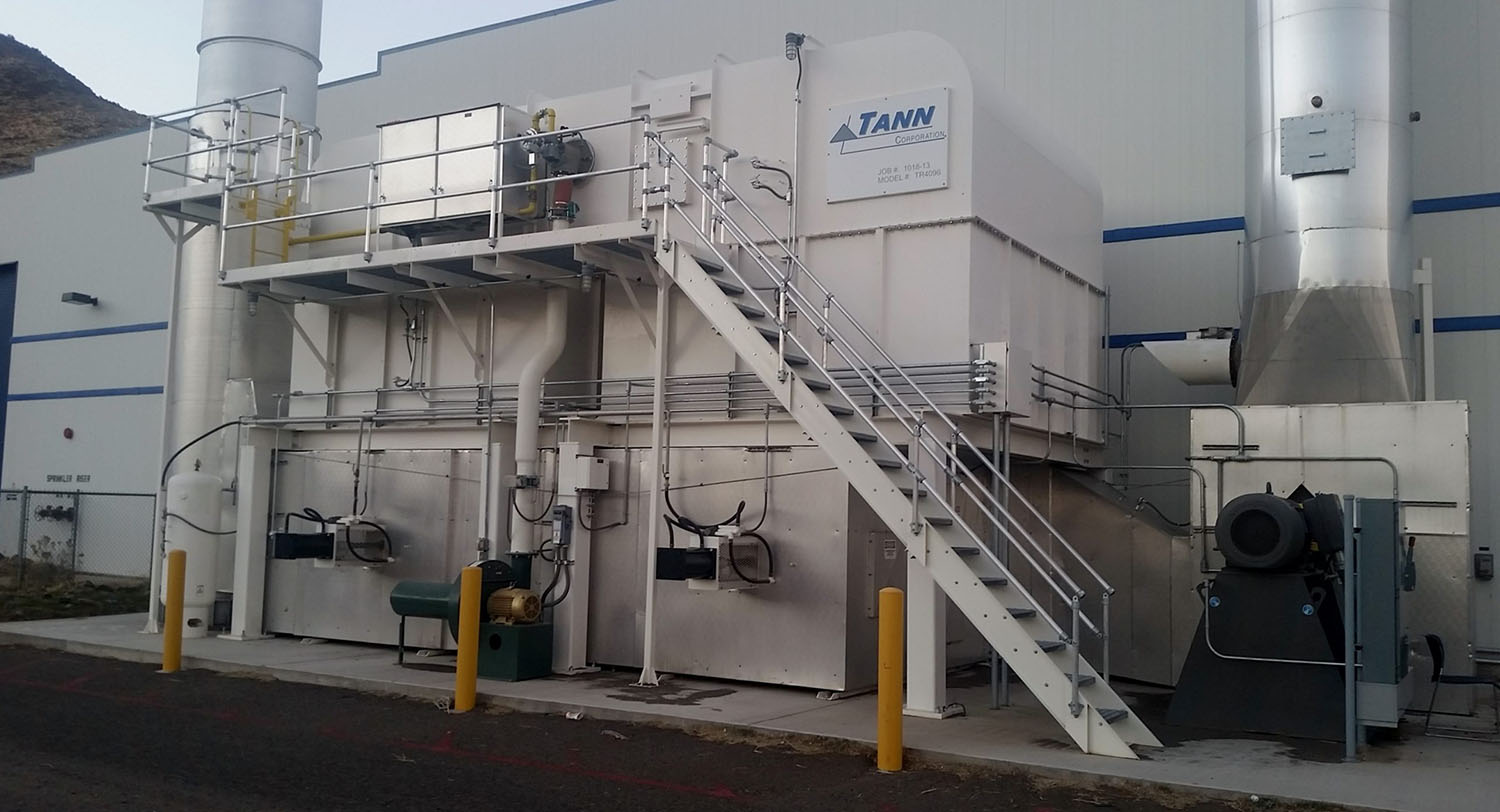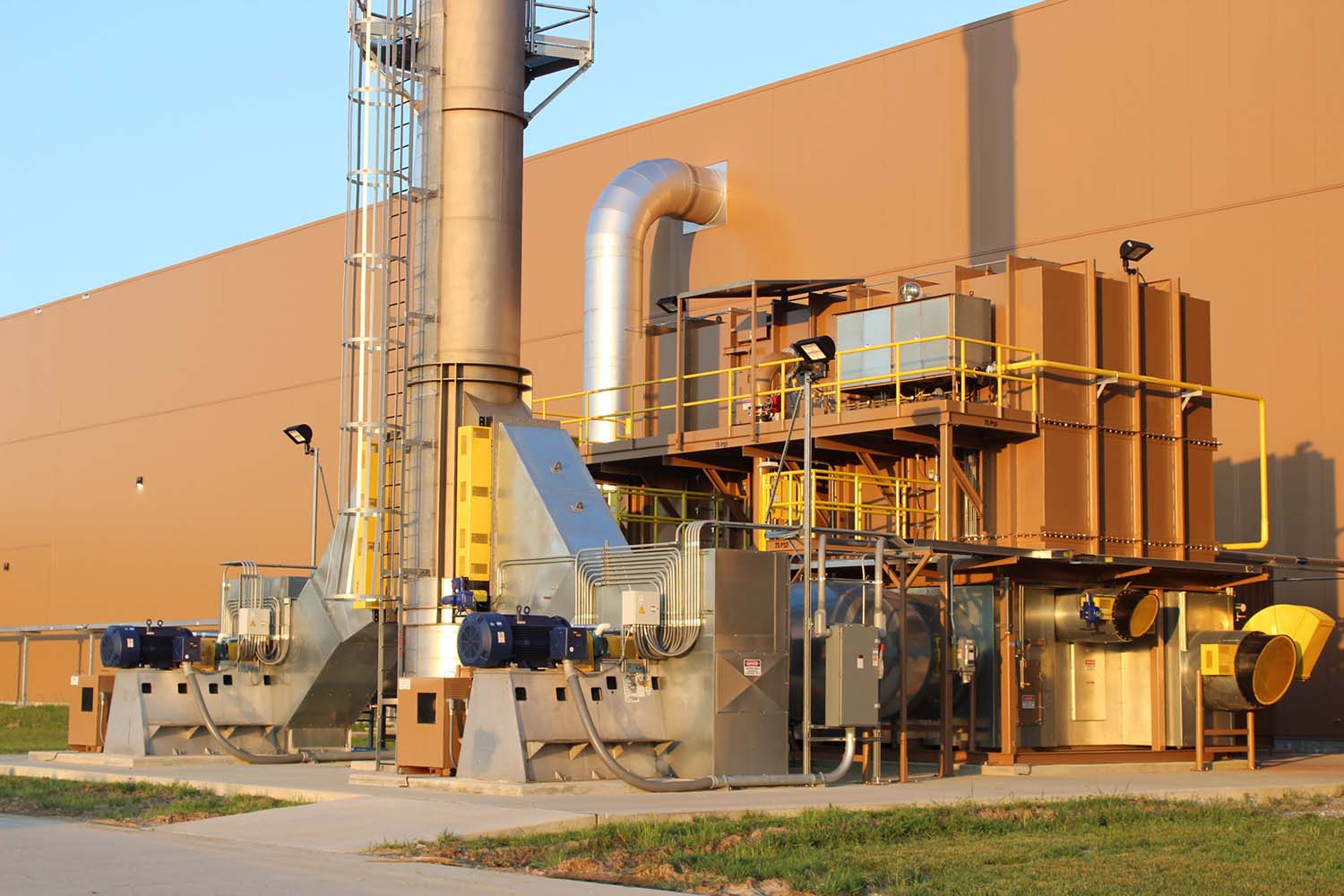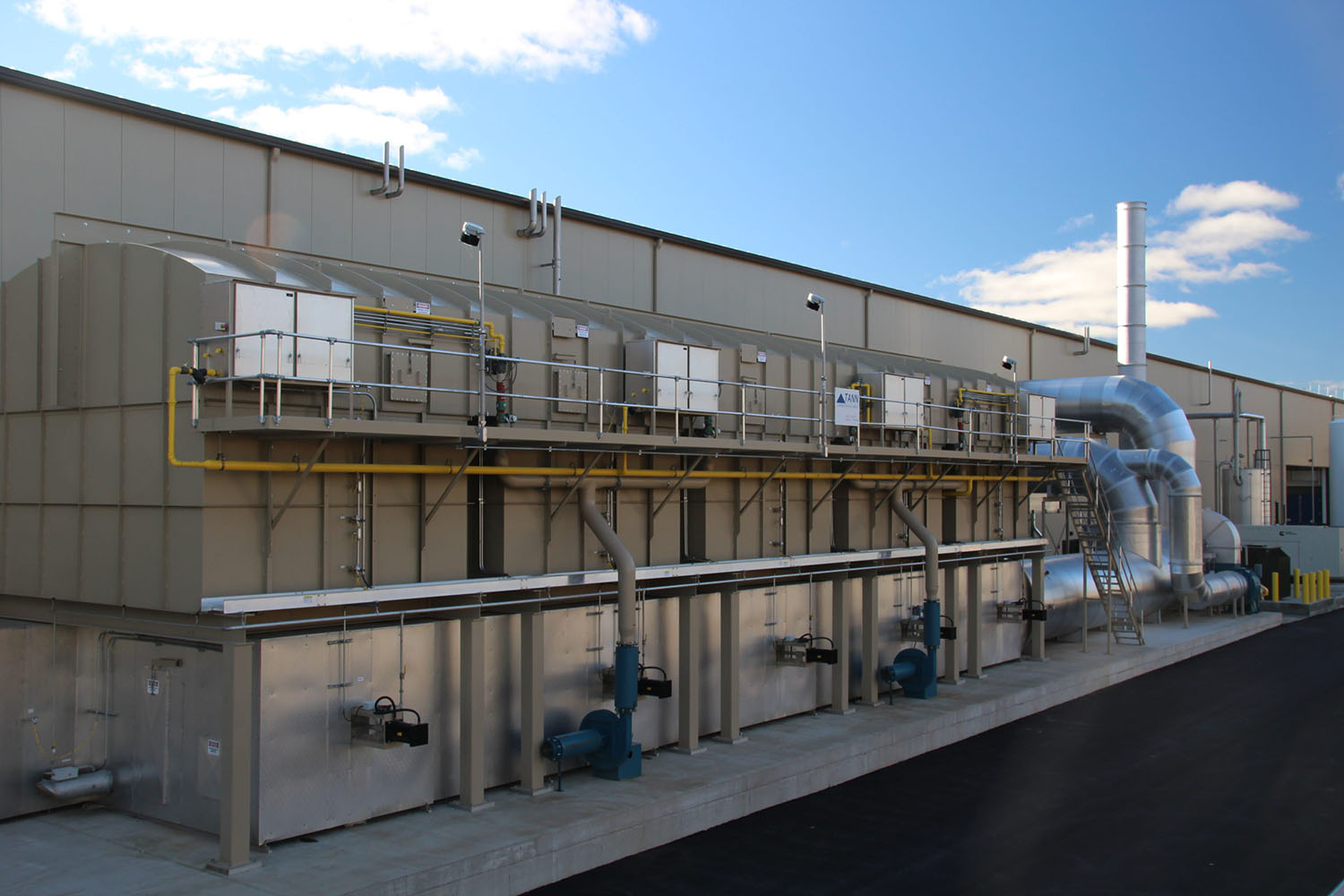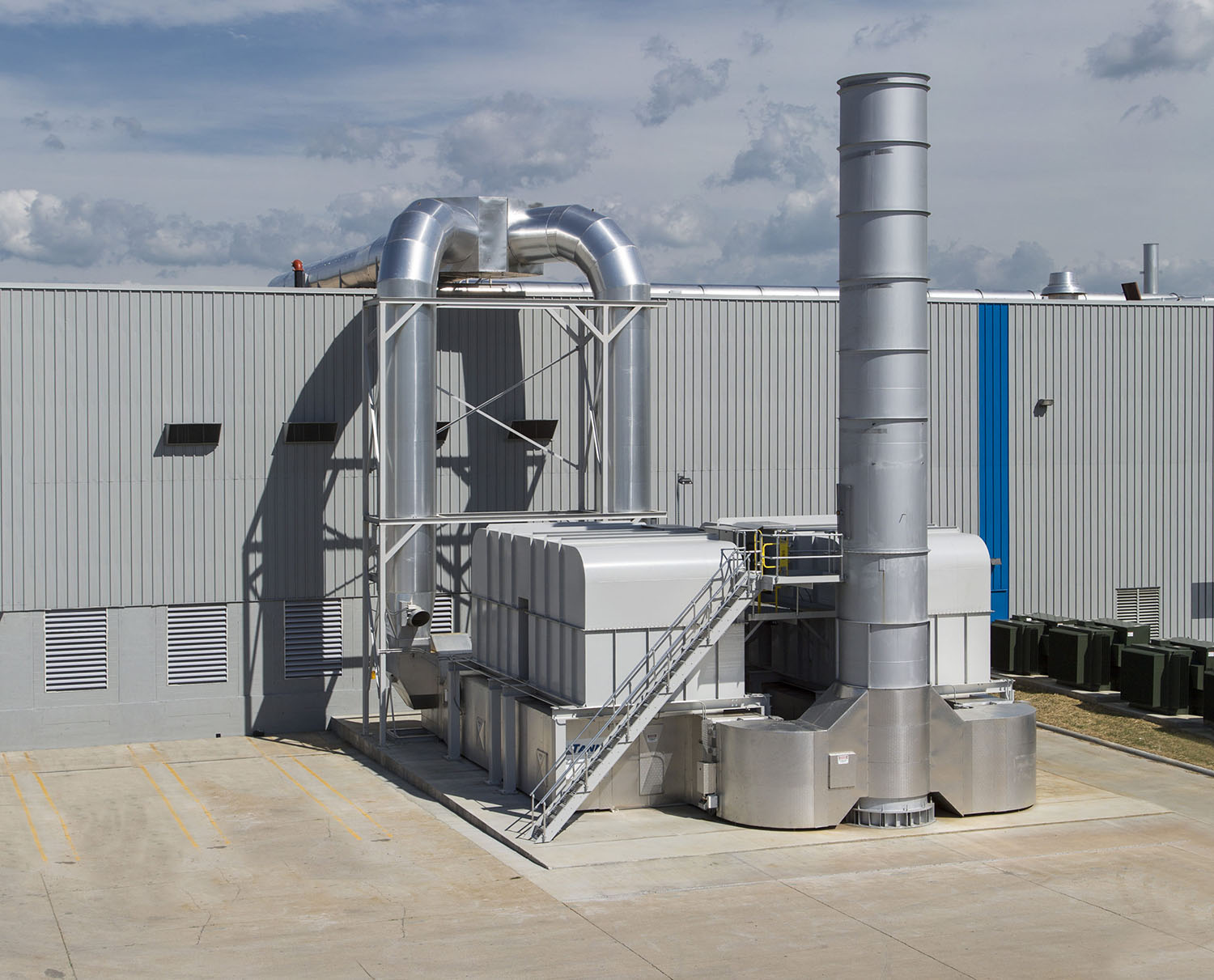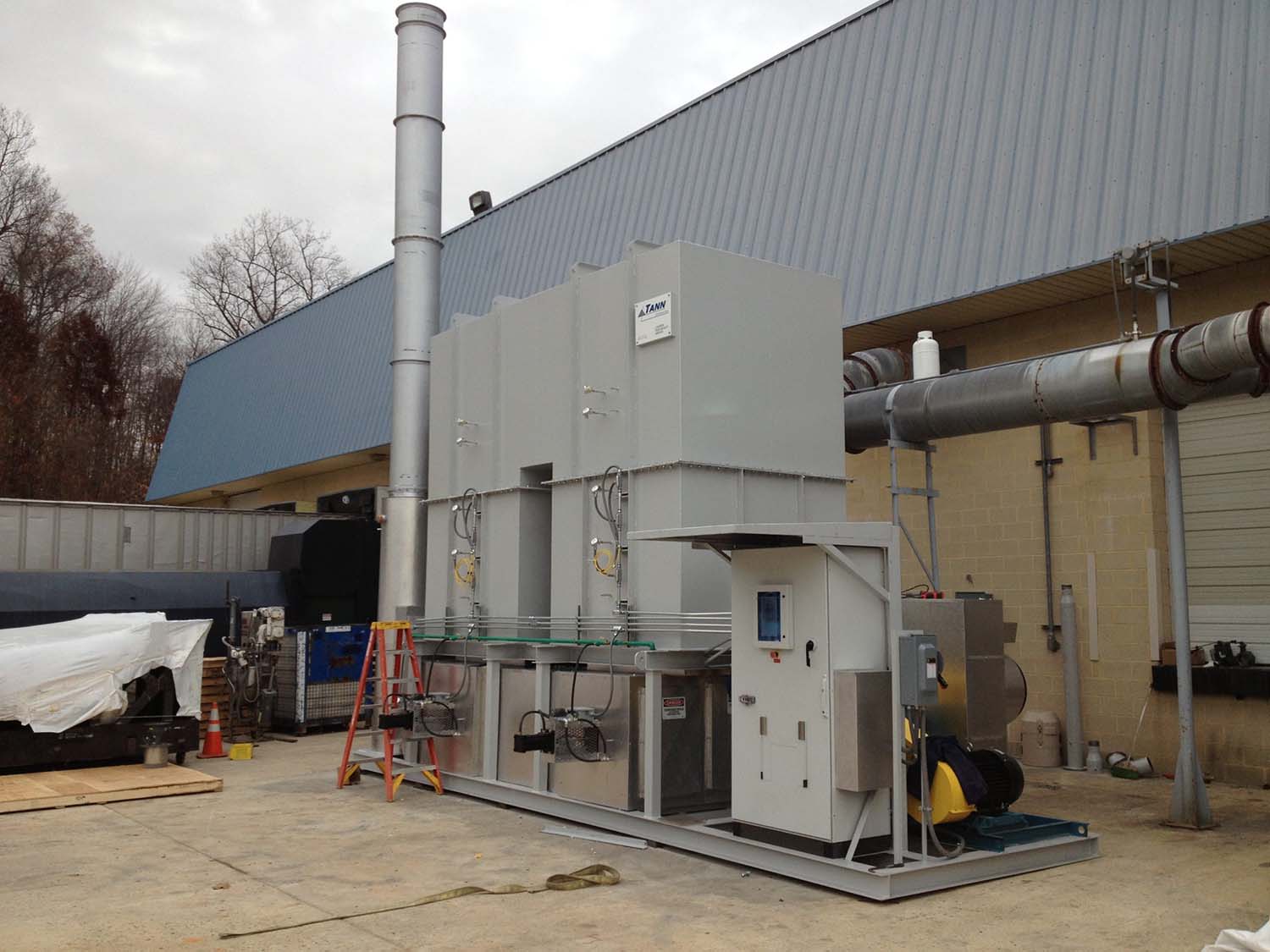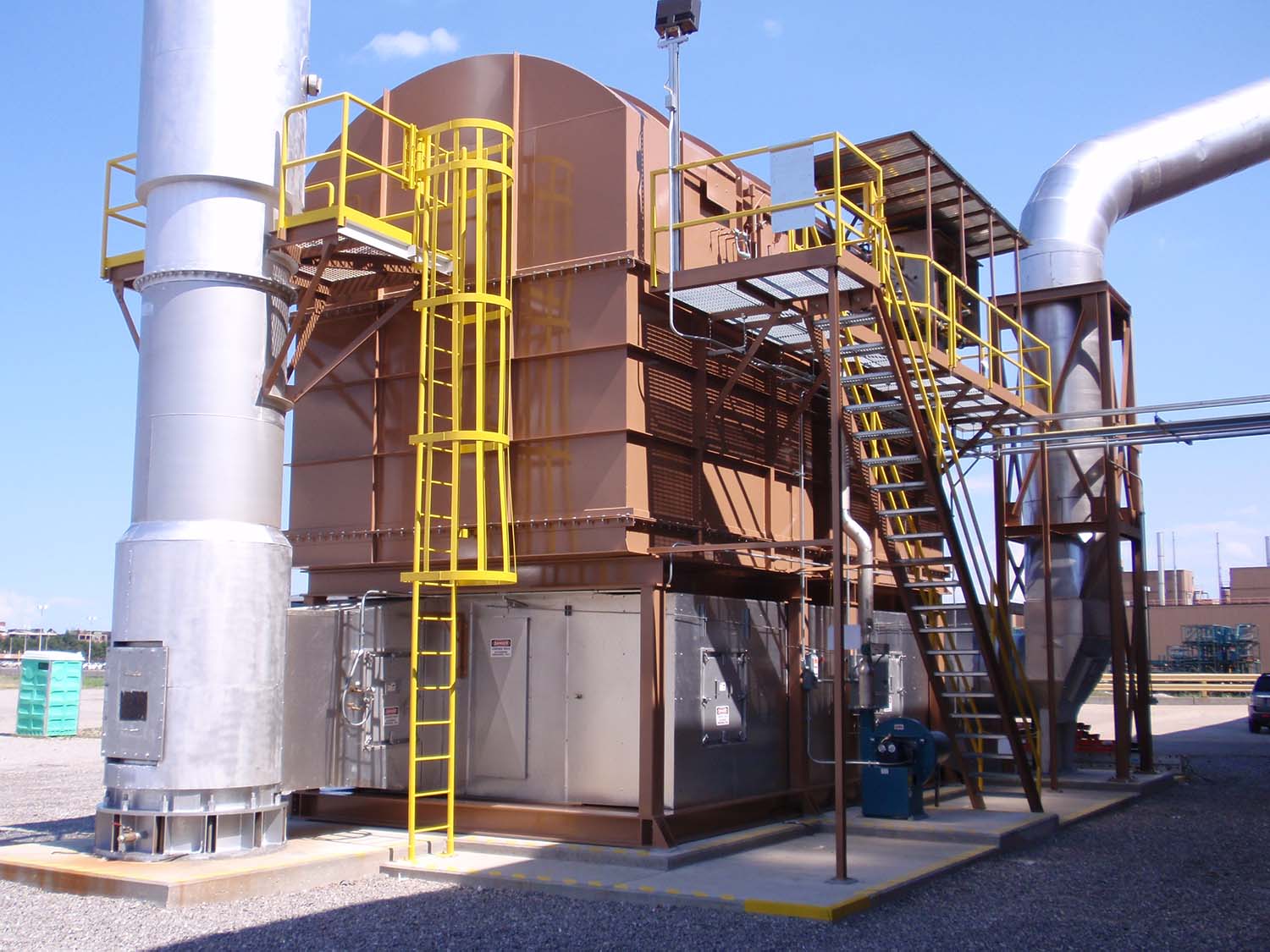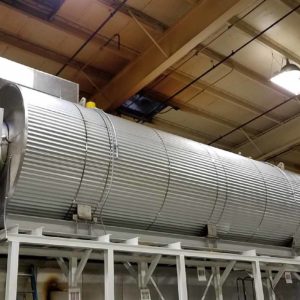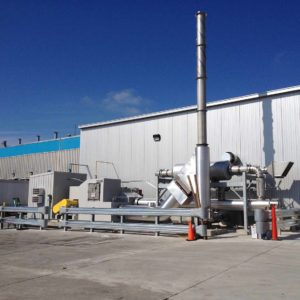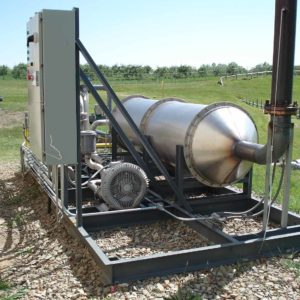Description
Regenerative thermal oxidizers (RTOs) are the most common oxidizer in today’s market. RTOs are capable of extremely high thermal efficiencies up to 97%. When considering a replacement oxidizer, RTOs can cut the customer’s gas cost considerably making the switch an easy decision. Due to their high thermal efficiency, Regenerative Thermal Oxidizers can often go into “self-sustain” mode, in which the burner shuts off completely, using zero gas. Longevity is also another big advantage for the RTO, because the heat exchanger and combustion zone are internally lined with refractory insulation. There are no internal steel components which are exposed to reaction chamber temperature. RTOs can achieve high thermal efficiencies due to the ceramic media. Each process is evaluated by our engineers to determine the correct media for the application. We utilize either structured (honeycomb) media or random packed media in the RTO design, depending on the application.
How an RTO Works
A regenerative thermal oxidizer utilizes a unique regenerative style heat exchanger. This heat exchanger is comprised of ceramic material which can come in the form of saddles or honeycomb blocks. These regenerative heat exchangers can achieve considerably higher thermal efficiencies than a shell and tube or plate style. Efficiencies can be as high as 97%, which can cut natural gas usage by 90%. A 2 tank RTO is made up of two media chambers which act as the heat exchanger. Process exhaust passes through one media chamber on its way to the combustion chamber. As this process air passes through this chamber, it will absorb the heat from the ceramic media and preheat the air stream prior to entering the combustion chamber. The combustion chamber is set to a fixed temperature and controlled by a burner or natural gas injection. This fixed temperature will ensure the VOCs in the air stream are converted prior to entering the outlet media chamber. As the process air stream leaves the combustion chamber it will exit through the opposite media chamber (see: How An RTO Works flow video). When the hot process air, now clean, passes through the exit tank, the ceramic media will absorb the majority of the heat (energy) prior to exiting the system. The air will continue to go in this direction for the duration of the cycle, which is typically 2-4 minutes. After this cycle time has expired, the RTO will switch directions. The outlet tank which has been absorbing the combustion chamber heat is now the inlet tank and releases all of the stored up energy into the process inlet stream prior to reaching the combustion chamber. This cycle continues and repeats itself every 2-4 minutes. The direction of the airflow is controlled by a set of valves below each tank.
Poppet Valves
TANN utilizes a set of poppet valves to control the flow and ensure a tight seal. The directional valves of an RTO are the heart of the system. Our valves are built in our own manufacturing facility in Kaukauna, WI, where we can oversee the construction and test every valve prior to shipping. We believe in building a robust valve with low maintenance and a dependable seal without gaskets. Gasket will have a tendency to wear over time and can cause lower destruction efficiencies. Our poppets use a metal-to-metal machined surface. Our poppet blades are designed using FEA software to ensure the longest cycle-life possible.

